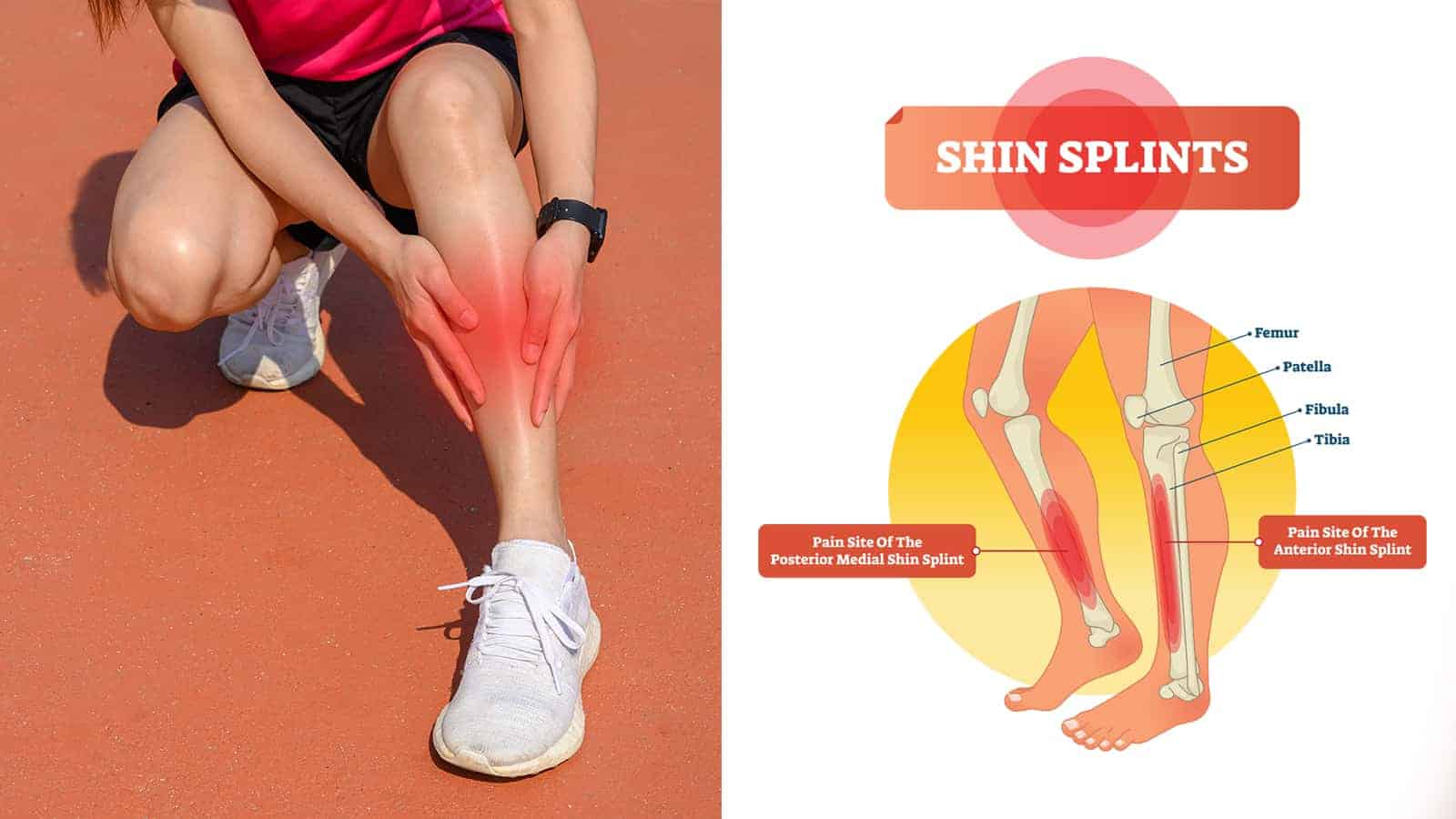If you are an active person, imagine all the workouts that your legs get. Sometimes, though, you can have too much of a good thing. You know all too well if you’ve ever experienced painful shin splints.
Did you know that your tibia (shinbone) is the second-largest bone in your body besides your femur? It takes these massive bones, plus your fibula, to create the legs that support your body. Your tibia is the large bone in the front of your lower leg, and your fibula is the smaller bone in the back that supports your calves.
You will notice that the thick muscles of your calves cover your fibula while your shinbone is close to the surface of the skin. Your shinbones have a triangular shape with the smallest point towards the front of your lower legs.
Have you ever been exercising or even walking around the block and felt sharp pains in your shins? Or maybe it is a dull ache that never seems to stop. Chances are you are experiencing what medical experts call shin splints.
A journal article published by Comprehensive Therapy explains that shin splints are called medial tibial stress syndrome, or MTSS. While the syndrome’s pathology isn’t fully understood, it usually presents people who “overdo” exercises and other activities. Sometimes, shin splints can be a symptom of tumors, lipomas, or stress fractures.
What Causes Shin-Splints?
When you are especially active, you may be prone to MTSS, says an article from Current Reviews on Musculoskeletal Medicine. The report asserts that shin splints are the primary cause of exertional leg pain in athletes. MTSS is considered a repetitive stress injury, so it’s easy to see why athletes are affected.Consider all the workouts you do with your legs, especially if you are a fitness or sports enthusiast. Any activity that involved your legs specifically, like running, kickboxing, or physical training, may trigger pain or MTSS. The article warned that if MTSS isn’t treated, it can lead to more serious debilitating disorders.
The article also mentions the gender differences in experiencing shin splints. It cites statistics published by Physical Medicine and Rehabilitation Clinics in North America that female athletes have 1.5 to 3.5 times the risk of developing progressive MTSS and stress fractures. Low calcium (hypocalcemia) can also be a culprit.
What Are the Symptoms of Shin-Splints?
The intensity of pain may vary from person to person. However, MTSS usually causes discomfort right along the edge of your inner shin bone. You may feel a stabbing (acute) pain, or it may be a dull ache that can be present during activities or at rest. Unfortunately, you can get MTSS in both legs at the same time.
What Are Other Risk Factors for Shin-Splints?
Being overly active isn’t the only risk factor for MTSS, although it’s usually the cause. Here are some other risk factors to consider:
•Having flat feet
•Wearing worn-out shoes or ones that don’t fit properly
•Your feet roll in when you walk or run (called pronation)
•Exercising on hard surfaces, like pavement
•You recently started playing a high-impact sport
•You’re a runner, gymnast, or dancer
•You don’t pace your training times, levels, or distances properly
How is MTSS Diagnosed?
Most of the time, mild symptoms of MTSS will resolve with a little time and rest. However, you should seek medical attention if the pain is severe or won’t improve. If you notice that your shin area is inflamed and feels warm to the touch, you should visit your primary healthcare provider as soon as possible.
Since a tibial stress fracture’s symptoms often mimic those of MTSS, your healthcare team may run a series of tests to determine a diagnosis. They will interview you to assess your symptoms, medical history, and current activity levels.
Some of the standard tests for MTSS diagnosis include an x-ray or MRI.
These imaging tests can reveal if the problem is MTSS or another issue like a stress fracture. If you have a stress fracture, the imaging will display a small crack along your shin bone.
How Can Your Prevent MTSS?
If you have any of the risk factors listed, you can take certain precautions to avoid a painful bout of MTSS. They may not be foolproof, but at least they can minimize your risks. Try these suggested hints:•You should wear shoes that fit you well and will absorb shock when you run.
•If you are a runner, consider running on softer surfaces like a treadmill or a track.
•A novice runner should strive to build your speed and endurance gradually.
•If you are a gymnast or dancer, consider exercising on a sprung floor, a special floor with a little bounce to it.
•Try incorporating lower impact exercises like swimming, yoga, or Pilates.
How Can I Treat Shin-Splints
Since this common injury can be bone or muscular related, you first need to know what type of splint you are experiencing. Since the two are treated differently, you must see a doctor and have an x-ray for a definitive diagnosis.
•Bone Related
When bone-related, you need to be careful as all the bone stress can lead to a fracture. If you should get a fracture, then you will be down for a while. Bone related shin splints require rest.
It would help if you avoided all activities that put any stress on your legs, like walking or running. However, if you still feel that you must exercise to stay fit, then doing something like a stationary bike or swimming is acceptable. These workouts won’t put any undue on the bone to further complicate matters.
•Muscular Related
When the problem is muscular, it is a bit easier to treat than an issue with the bone. One of the best ways to treat it is to use a foam roller and roll it along your shins and calves. One of the most significant issues in a muscular injury is that the fascia is too tight, and running a foam roller over the painfully stiff region is perfect.
If you do this activity periodically throughout the day, then you will notice that the fascia is not as tight nor painful. Another commonly used method is a manual massage. You can do this or have a partner help you out.
Muscular issues require proper backing, which is why you might need new shoes. Your shoes must provide adequate arch support and allow your feet to be stable when walking or working out. The right support in a pair of shoes can help address biomechanical problems within your feet.
Additionally, it can help to alleviate stress from the muscle that is affected.
Prevent Shin Splints from Occurring
If you are an avid runner or someone who is continuously working out, then you might want to take proper precautions to avoid this injury. There are four things that you can do besides getting new shoes that can have a dramatic impact.
1. Reduce Your Running Pace
If you reduce your pace while increasing your foot strike rhythm, it will help you have better pace mechanics. When you learn how to put less of a load on your feet and shins, you will decrease the chances you will sustain an injury.
To help you learn this trick, you should count your foot strikes on your left side for about 60 seconds. Now, switch and count the strikes on the right side. The goal is to have no more than 90 strikes per minute on each foot.
Any more than that number is asking for trouble.
2. Workout Your Hips and Inner Core Regions
Improving these regions will make you a tougher runner, which enhances foot strike and your body’s mechanism.
3. Use the Ten Percent Guideline
The goal of most runners is to do more as you are always striving to get better and faster. However, you should never increase your weekly mileage by more than ten percent.
4. Monitor Your Vitamin Levels
Your vitamin levels are essential, specifically your vitamin D and calcium. When you are deficient in either of these, then you have an increased chance of developing problems. If you don’t want to take supplements, you can make sure you get what you need by eating milk, yogurt, and other dairy products.
Final Thoughts on Reducing the Pain of Shin Splints
Dealing with calf and shin pain is no easy feat. Whether the pain is in the bone or the muscle can significantly impact how it’s treated. However, it’s best to utilize methods to prevent the pain from occurring in the first place.
You can do many stretches and things to help with pain when it’s muscular, but you should always see a doctor for a definitive diagnosis. You don’t want to put any additional strain on an already problematic region. Shin splints are painful, but you will recover in time.
















 Community
Community

